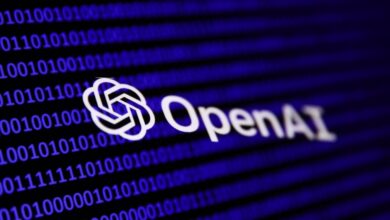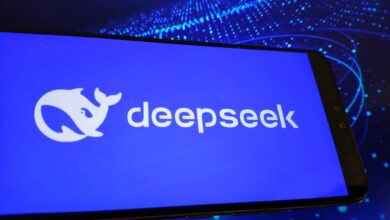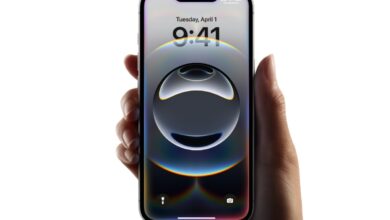How Good Are People at Detecting AI?

As AI continues to evolve, AI-generated images and text will become increasingly indistinguishable from human-generated content. Whether they’re realistic deepfake videos, art, or advanced chatbots, these creations often leave people wondering if they can tell the difference between what’s real and what’s created by AI.
Find out how accurately people can detect AI-generated content and compare that accuracy to their perception of their capabilities.
The human ability to detect AI
AI technology has evolved rapidly in recent years, creating visual arts, writing articles, composing music, and generating highly realistic human faces. With the rise of tools like ChatGPT for text generation and DALL-E for image creation, AI content has become part of everyday life. What once seemed clearly machined is now often indistinguishable from the work of humans.
As AI content becomes more sophisticated, so does the challenge of detecting it. A 2023 study illustrates how difficult it is to distinguish between AI and human content. The researchers discovered that AI-generated faces can actually seem more human than real faces, a phenomenon known as hyperrealism.
In the study, participants were asked to distinguish between AI-created and real human faces. Surprisingly, those who were worse at detecting AI faces were more confident in their ability to recognize them. This overconfidence amplified their errors, as participants consistently misjudged AI-generated faces as more human, especially when the faces were white.
The study also found that AI faces were often perceived as more familiar, proportionate and attractive than human faces – qualities that influenced participants’ misjudgment. These findings highlight how AI-generated content can exploit certain psychological biases, making it more difficult for individuals to accurately identify what is real and what is artificially produced.
In a related study of 100 participants from different age groups, results suggested that younger participants were better at identifying AI-generated imageswhile the elderly had a more difficult time. Interestingly, there was also a positive correlation between participants’ confidence and accuracy, although common misclassifications were related to subtle artifacts such as unnatural details in animal fur and human hands.
Why is AI difficult to detect?
There are several reasons why people struggle to differentiate between human-created and AI-generated content. One reason lies in the increasing realism of AI, especially what is known as strong and weak AI.
Weak AI refers to systems designed to perform specific tasks – such as generating text or images – and although they mimic human behavior, they possess no real understanding or real consciousness. Examples of weak AI are chatbots and image generators. On the other hand, strong AI represents hypothetical systems that can think, learn, and adapt like a human for a wide range of tasks.
Currently, the tools most people interact with every day fall into the category of weak AI. However, their ability to simulate human creativity and reasoning has advanced to the point where it is becoming increasingly difficult to distinguish between human and AI-generated content.
Tools like OpenAI’s GPT models are trained on massive data sets, allowing them to generate natural and coherent language. Similarly, image generators are trained on millions of visual inputs, allowing them to create lifelike images that mimic reality as closely as possible.
Furthermore, AI can now replicate more than just the appearance, but also the style and tone of human creations. For example, AI-authored text can mimic the nuances of professional writing, adopting the appropriate tone, structure, and even personality traits depending on the context. This adaptability makes it harder for people to rely on their intuition to determine whether a machine or a person wrote something.
Another challenge is the lack of clear tell-tale signs. While early AI was often recognizable by clunky grammar, strange image artifacts, or overly simplistic structures, modern AI has become more adept at eliminating these giveaways. As a result, even people familiar with the technology find it difficult to rely on previous patterns to detect AI creations.
Case studies: humans detecting AI-generated content
The challenges of detecting AI-created content have been confirmed in multiple studies.
Teachers in one study only correctly identified AI-generated student essays 37.8%-45.1% of the timedepending on their experience level. Similarly, participants in another study could only identify GPT-2 and GPT-3 content 58% and 50% of the timewhich respectively demonstrate the limits of human judgment in distinguishing AI from human work.
Further reinforcing these findings, experiments conducted by Penn State University found that participants could only distinguish AI-generated text 53% of the timebarely better than random guessing. This highlights how challenging it is for humans to detect AI content, even when given the binary choice between human and AI-authored text.
In specialized areas such as scientific abstracts and medical residency applications, professionals with years of experience correctly identified AI-generated content only 62% of the time. Reviewers distinguish AI-written residency applications at a rate of 65.9%highlighting the increasing sophistication of AI and the challenges associated with relying on human perception for detection.
Another study showed that people incorrectly identified GPT-4 as human 54% at the time, indicating that even advanced users had difficulty with detection. College instructors identified AI-generated essays Correct 70% of the timewhile students did this at 60%. Despite these higher numbers, a significant margin of error remains, illustrating the difficulties in accurately detecting AI content in academia.
Factors that influence the accuracy of AI detection
Several factors influence how well humans can determine AI-created content. One of these is the complexity of the content being analyzed. Shorter passages of AI-generated text are typically harder to detect because there is less context in which the reader can identify unusual wording or structure.
In contrast, longer text may provide the reader with more opportunities to notice inconsistencies or patterns that indicate AI involvement. The same principle applies to images: simple images can be harder to distinguish from real ones, while very complex scenes can sometimes reveal subtle signs of AI generation.
Finally, the type of AI model used can also influence detection accuracy. For example, OpenAI’s GPT-3 model produces more compelling text than older versions, while newer image generation tools like MidJourney create more realistic images than their predecessors.
The psychological implications of AI detection
The difficulty of detecting AI-generated content raises important psychological and social questions. One of them is how much trust people place in what they see and read.
AI is getting better at imitating human creativity creating and spreading disinformation becomes easier because people can unknowingly consume content produced by a machine with a specific agenda. This is particularly worrying in areas such as political discourse, where AI-crafted deepfakes or misleading articles can influence public opinion.
Furthermore, many people’s overconfidence in detecting AI-created content can lead to a false sense of security. In reality, even experts in the field of AI are not immune to being deceived by advanced machine-generated creations. This phenomenon is known as the ‘illusion of explanatory depth’ People overestimate their understanding of a complex system simply because they are familiar with its basic principles.
The future of AI detection: can things improve?
Given the challenges, what can be done to improve people’s ability to detect AI-generated content? One possible solution is the development of AI detection tools. Just as AI has become better at generating content, researchers are also working to create systems that can identify whether something was created by a machine.
Education is another possible solution. By raising awareness about the limitations of human judgment and the sophistication of AI, people can become more careful and critical when evaluating content. Courses that teach individuals how to recognize AI-created content, such as analyzing unusual patterns in text or spotting inconsistencies in images, can help improve detection accuracy over time.
The invisible complexity of AI detection
As AI blurs the line between human and machine-generated content, it becomes increasingly difficult for humans to accurately identify AI creations.
While many people think they have a strong ability to detect AI, the reality is that most people are only slightly better than chance at distinguishing between real and machine-made content. This gap between perception and reality underlines the sophistication of modern AI and the need for technology-based solutions and greater awareness to navigate this new digital landscape.
In the coming years, as AI continues to improve, people will need to determine how good they are at detecting AI and how much it matters. As machines become further integrated into everyday life, the focus may shift from sensing to understanding how to coexist with AI to maintain trust, creativity and human authenticity.






